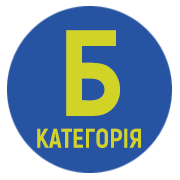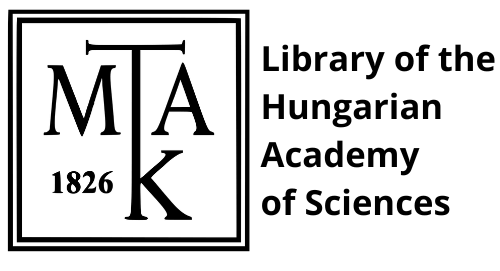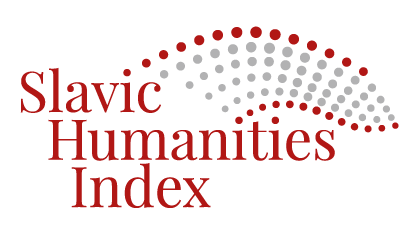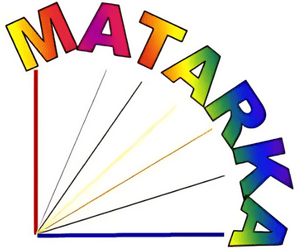Linguistic resources in classroom interactions
DOI:
https://doi.org/10.58423/2786-6726/2022-2-161-179Keywords:
bilingualism, official language teaching, school dialogue, linguistic resource, language useAbstract
This time we have focused on classroom speech situations in a language other than a foreign language (or a broader environmental language), although the literature provides a plethora of research on this topic. In this paper, we have focused on the relationship between the state language/official language and the mother tongue, with special attention to the accessed linguistic resources. We have tried to organise our data along the following two questions: (1) What kind of relations can be observed in second language classrooms with respect to the first language? (2) In cases where the first language appears, what role does it play, what purposes does it serve, and what message does it possibly carry? In this analysis, we summarise our experience in the education systems of three countries, based on data collected in Hungarian-medium schools in Slovenia, Slovakia and Romania. Classroom observation and structured interviews formed the basis of our work. The paper is divided into four parts: a theoretical introduction is followed by a description of the research and an interpretation of the data and conclusions. From the classroom speaking situations presented, it can be seen that different language teaching paradigms result in specific classroom language use and scenarios. While in the Slovenian cases we have seen classroom situations of complementary and parallel use of L1 and L2, the Slovak and Romanian examples are more representative of the practice of L2 and the effort to keep communication in the target language. In the cases where mother tongue use did occur, it was mainly in a meaning-compensating role. The study highlights that differentiated curricula (in our case, the non-native curriculum being introduced in Romania), which is essentially a minority-centred adaptation of foreign language teaching strategies, also carries the classroom values of 'social justice', since it also sees the 'other' language as a value. At the same time, the classroom situations analysed also point to the educational challenges of awareness language behaviour, namely the phenomena of language attrition and monolingual inertia or comfort.
References
Bannink, Anne – Dam van Jet, 2006. A dynamic discourse approach to classroom research. Lingvistics and Education 17, pp. 283–301.
https://doi.org/10.1016/j.linged.2007.01.001.
Bátyi Szilvia, 2020. Only time will tel… Only time will tell… Extralinguistic variables in L1 lexical attrition. In: Bátyi Szilvia – Lengyel Zsolt szerk. Kétnyelvűség: magyar és nem magyar kontextus / Bilingualism: Hungarian and non-Hungarian context, Pannon Egyetem, pp. 11–25.
Corder, Stephen P, 1983. Strategies of Communication. In: Faerch, C. – Kasper, G. eds. Strategies in Interlanguage Communication. London: Longman, pp. 15–19.
Cummins, James, 1981. Bilingualism and Minority Language Children. Ontario: Ontario Institute for Studies in Education.
Gorter, Durk; Cenoz, Jasone, 2017. Language education policy and multilingual assessment. Language and Education 31/3: pp. 231–248.
Heller, Monica, 2006. Linguistic minorities and modernity: A sociolinguistic ethnography (2nd ed.). London: Continuum.
Heltai János, 2016. Az egységes nyelvi repertoár pedagógiája [The pedagogy of the unified language repertoire]. Magyar Nyelvőr [Hungarian Language Guard] 140/4, 2016. október–december.
https://www.academia.edu/30785173/Az_egys%C3%A9ges_nyelvi_reperto%C3%A1r_pedag%C3%B3gi%C3%A1ja (2022.06.28.) (In Hungarian)
Herdina, Philip – Jessner, Ulrike, 2002. Dynamic model of multilingualization: Perspectives of Change in Psycholinguistics, Multilingual Matters, 121. Clevedon: Cromwell Press Limited.
Jakonen, Teppo – Szabó, T. Péter – Laihonen, Petteri, 2018. Translanguaging as Playful Subversion of a Monolingual Norm in the Classroom. In: G. Mazzaferro ed. Translanguaging as Everyday Practice. Springer. Multilingual Education, 28, pp. 31–48. https://doi.org/10.1007/978-3-319-94851-5_3
Kolláth Anna, 2009. Kétnyelv és oktatás. [Bilingualism and education] In: Kolláth szerk. A muravidéki kétnyelvű oktatás fél évszázada [Half a century of bilingual education in Muravidék]. Bielsko-Biala–Budapest–Kansas–Maribor–Praha, Zora 68, 36–59. o. (In Hungarian).
Kolláth Anna – Gróf Mária, 2014. A szlovéniai magyar nyelv, ELDIA esettanulmány. [The Hungarian language in Slovenia, ELDIA case study]. Studies in European Language Diversity 28.1, https://phaidra.univie.ac.at/open/o:356645 (2022.06.30., In Hungarian).
Kozmács István, 2019. Az államnyelv oktatása a szlovákiai magyar tannyelvű általános iskolákban. [Education of the state language in Hungarian-language primary schools in Slovakia]. Magyar Nyelvőr [Hungarian Language Guard] 143/2: 184–196. o. (In Hungarian).
Ladányi Mária – Hrenek Éva szerk., 2o19. Alkalmazott nyelvészeti kisszótár. [Small dictionary of applied linguistics]. Budapest: ELTE (In Hungarian).
Lanstyák István, 2006. Nyelvről nyelvre. Tanulmányok a szókölcsönzésről, kódváltásról és fordításról [From language to language. Studies on word borrowing, code switching and translation]. Pozsony: Kalligram (In Hungarian).
Péntek János – Benő Attila, 2020. A magyar nyelv Romániában (Erdélyben) [The Hungarian language in Romania (Transylvania)]. Kontra Miklós szerk. Kolozsvár–Budapest: EME–Gondolat (In Hungarian).
Pisnjak, Mária szerk., 2013. Priročnik za učitelje dvojezičnih šol v Prekmurju/ Kézikönyv a muravidéki kétnyelvű iskolák pedagógusai számára [Handbook for the teachers of the bilingual schools in the Mura region]. Lendva: Magyar Nemzetiségi Művelődési Intézet (In Hungarian).
Shohamy, Elana, 2006. Language Policy. Hidden agendas and new approaches. London: Routledge.
Sobkowiak, Paweł 2022. Translanguaging practices in the EFL classroom – the Polish context. Linguistics and Education 69.
https://doi.org/10.1016/j.linged.2022.101020
Tódor Erika-Mária, 2018. Románnyelv-oktatás magyar tannyelvű iskolákban: tantervfejlesztéstől a gyakorlati kivitelezésig [Romanian language education in Hungarian-language schools: from curriculum development to practical implementation]. Modern Nyelvoktatás [Modern Language Education] 24/4: 3–17. o. (In Hungarian).
Tódor Erika-Mária, 2019. Nyelvi alapkészségek kialakítása a romániai magyar tan¬nyel¬vű iskolákban. [Development of basic language skills in Hungarian-language schools in Romania]. Magyar Nyelvőr [Hungarian Language Guard] 143/2: 173–183. o. (In Hungarian).
Tódor Erika-Mária, 2021. Language Use during Romanian Classes in Bilingual Settings. A Qualitative Approach. Acta Universitatis Sapientiae, Philologica 13/2: pp. 1−20.
Vančo Ildikó, 2017. A szlovák nyelv tanítása szlovákiai magyar tanítási nyelvű iskolákban. Általános helyzetkép [The teaching of the Slovak language in schools in Slovakia where the teaching language is Hungarian. General situation]. Magyar Nyelvőr [Hungarian Language Guard] 141/3: 272–291. o. (In Hungarian).
Vančo Ildikó, 2019. A szlovák nyelvi készségek kialakítása a szlovákiai magyar tanítási nyelvű iskolák alsó tagozatán. [The development of Slovak language skills in the lower grades of schools with Hungarian as the medium of instruction in Slovakia] Magyar Nyelvőr 143/2: 138–150. o. (In Hungarian).
Downloads
Published
How to Cite
Issue
Section
License
Authors retain copyright and grant the journal the right of first publication. The work is simultaneously licensed under a Creative Commons Attribution 4.0 International License (CC BY 4.0), which permits others to share the work with appropriate credit given to the author(s) and the initial publication in this journal.

















